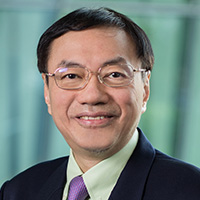Singapore’s annual Budget Speech is an annual political ritual in which the finance minister presents the nation’s annual incomes and expenditures.
Recent years have seen the speeches become less and less of an annual Budget proposal and more and more – as Finance Minister Heng Swee Keat puts it – a strategic plan.
In my view this year’s was even less a specifically a “Budget speech” and more of a broader “Investment speech”, articulating Singapore’s national investments predominantly along three key thrusts.
1. Structural framework
First, the Budget is about investment in Singapore’s structural framework for enterprise development. The fiscal year will see some $704 million in a total value of special transfers to business.
Very notably, there is a $100 million small and medium-sized enterprise (SME) Co-Investment Fund to help SMEs scale up and be ready for future competition. Existing initiatives such as the SME Working Capital Loan scheme and Automation Support Package will be extended, in fact even beyond this fiscal year to March 2021.
Interestingly, two unconventional industries for Singapore, namely aquaculture andenergy, will be nurtured through new innovation centres.
These represent novel areas of involvement that are probably contrarian considering the country’s resource and size constraints. These are investments not only to deliver economic returns in themselves but also for Singapore’s food and energy security in the long haul.
Most significantly, we will see Singapore being developed as strategic rallying points like the “Asia 101” for multinational corporations seeking Asian markets and the “Global 101” for Asian companies going to the world
2. Skills foundation
Second, the Budget continues the country’s investment in the development of worker skills. While enhancing general worker capabilities had been initiated some years back, the global twist is now beginning to take clear shape.
The noteworthy Global Ready Talent Programme will harmonise various existing related initiatives into a coherent human resource development platform.
Skills needed for emerging technology areas are not ignored. New Professional Conversion Programmes relating to blockchains, embedded software and prefabrication will be launched.
Skills of indigenous workers and older workers will also receive support through tightening of the foreign workforce quotas for the service sector and extending the Career Support Programme for hiring eligible mature, retrenched Singaporeans.
3. Social fabric
Third, the Budget emphasises investment on the national social fabric. Strengthening societal cohesiveness is key to Singapore’s future.
Budget 2019 introduces a $6.1 billion Merdeka Generation Package that is targeted to take care of the healthcare needs of citizens born in the 1950s.
A new Long-Term Care Support Fund totalling $5.1 billion will be launched for CareShield Life subsidies as protection against disability as well as for other support measures. All these involve the $2 billion earmarked last year with the rest coming from this year’s allocation.
Special to this year is the $1.1 billion Bicentennial Bonus, which consists of income tax rebates, education account top-ups and top-ups to Central Provident Fund (CPF) accounts. Apart from the income tax rebate, most of the other benefits will especially benefit the lower-income segments.
Dynamic plan
Singapore’s national strategic planning approach seems to rely primarily on the annual plan as encapsulated by the yearly Budget. Of course, there is also the Prime Minister’s National Day Rally Speech which lays out the critical parameters and considerations for the country. But again, this is yearly in nature.
We do see countries that have five-year plans. For example, China is in its 13th five-year plan for 2016-2020. Likewise, neighbouring Malaysia has explicit five-year planning horizons, and the country is in the 11th plan since the formation of its federation.
Does Singapore need five-year plans? Probably not.
The current annual Budget method is already a dynamic strategic plan with a long-term investment orientation. In fact, in the era of rapid global changes, the lines between single and multiple years are getting blurred, and the short and long terms are tightly intertwined.
The public finance paradigm of Singapore is not about spending today but investing for tomorrow. It is part of Singapore’s unique way of national governance.
Budget 2019 is not just about budgeting for the year. It is really about our investments for the future.




